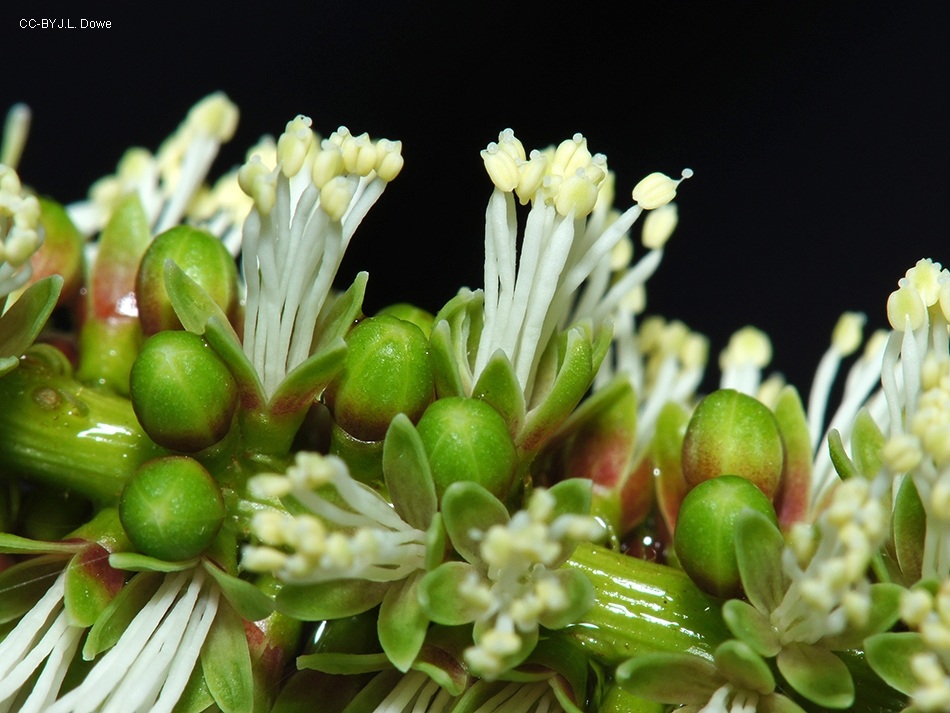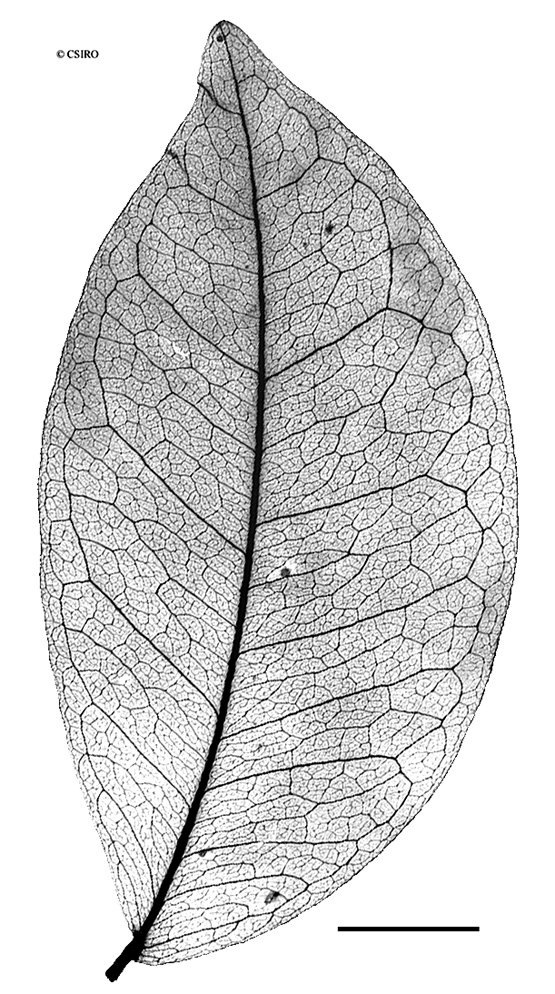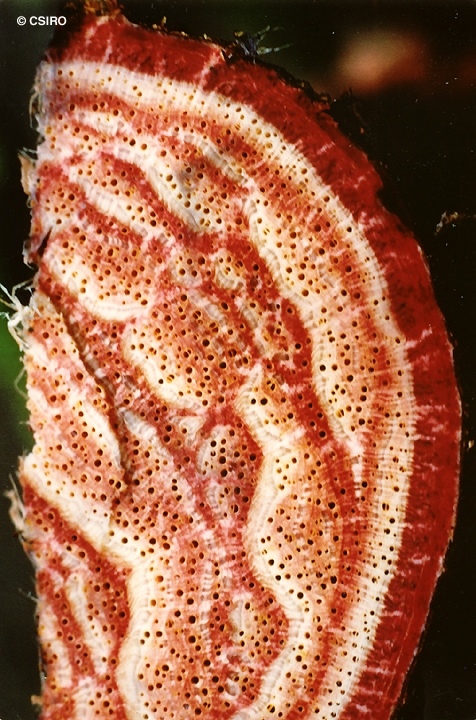Australian Tropical Rainforest Plants - Online edition
Entada rheedei Spreng.








Sprengel, C.P.J. (1825) Syst. Veg. 16th edn 2: 325. Type: Linn. Herb. Savage Cat. 1228.10, pods only.
Match Box Bean; Bean, Match Box
Leaves bipinnate with the primary axis of the compound leaf terminating in a bifid tendril. Leaflet blades about 3-8.5 x 1.7-4 cm, leaflet stalks about 0.1-0.5 cm long, transversely wrinkled. Stipules linear, about 2.5-5 mm long. Lateral veins about 8-10 on each side of the leaflet midrib. Leaflets 3-6 (perhaps 10) on each secondary axis.
Inflorescences about 12.5-15.5 cm long. Flowers pleasantly perfumed, about 5 mm diam. from petal tip to petal tip. Calyx cup-shaped, lobes scarcely visible, calyx tube about 1 mm long. Petals about 3 mm long. Stamens ten, filaments about 6 mm long, thicker at the apex than the base, anthers less than 0.5 mm long. Ovary about 2 mm long. Style about 5 mm long.
Pods about 60-70 x 6.5-7 cm long, segmented, each segment about 7.5-6.5 cm. Endocarp woody. Seeds flattened, about 4-5 cm diam. Testa very hard. Adaxial surfaces of the cotyledons not touching and forming a hollow. Radicle about 3 x 4 mm.
About three cataphylls produced before the first true leaves. Tendrils may also be produced before the first true leaves. First true leaf produced about 60 cm above the seed remnants. First true leaf compound, sometimes bipinnate with four leaflets and a terminal tendril. Second true leaf compound, often bipinnate with eight leaflets and a terminal tendril. Stipules about 2.5 mm long. At the tenth leaf stage: leaf bipinnate with about 8 leaflets and a terminal branched tendril at the end of the primary compound leaf axis. Leaflet blades about 5.5-8.5 x 3-4.5 cm, leaflet stalks about 0.3 cm long. Leaflet blades elliptic to obovate, apex obtuse and emarginate, base cuneate to obtuse and oblique. Midrib raised on the upper surface. Lateral veins forming loops inside the blade margin. Stipules small, linear, about 2-3 x 0.2 mm. Seed germination time 18 to 26 days.
This species may be poisonous as it contains various saponins particularly in the bark, root and seeds. The bark has been used as a fish poison. This species may have medicinal properties. Aborigines ate the seeds after cooking and leaching in water. (Everist 1974).





